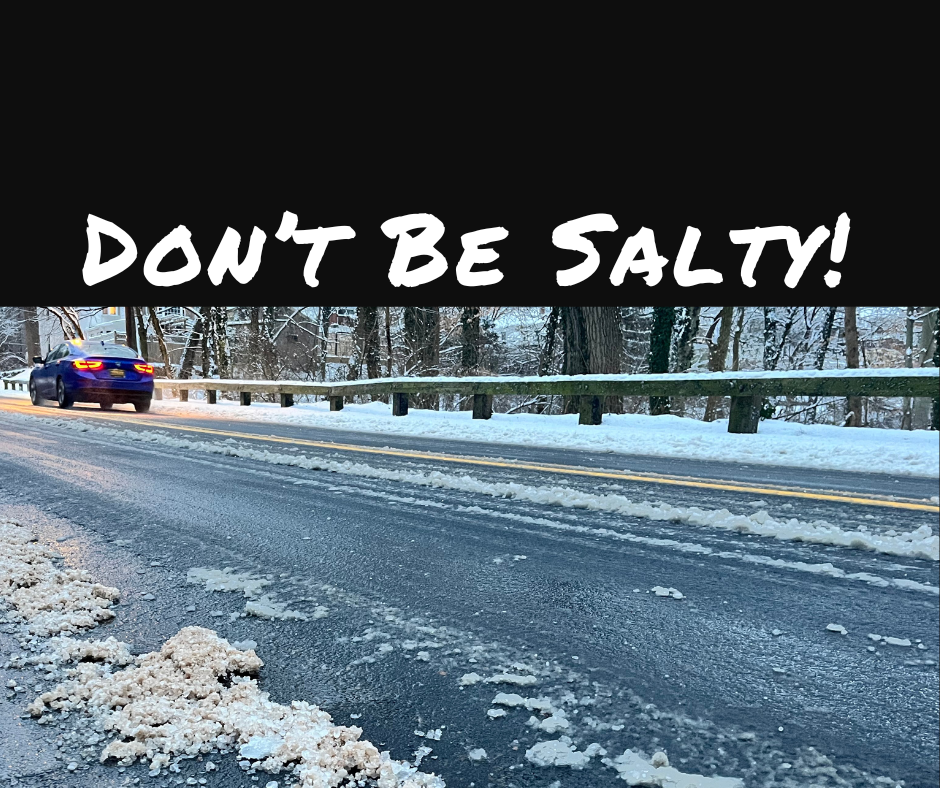
2 minute read
Don't be Salty!
from winter-news-16
Waterways and Wildlife are Depending on You to Consider Alternatives to Road Salt This Winter
Did you know nearly 40 percent of urban streams in the U.S. have chloride levels that exceed safe guidelines for aquatic life?
Every winter, approximately 20 million tons of sodium chloride (road salt) are spread on U.S. roads to combat ice and snow. While it might temporarily keep roads safer, the environmental consequences are long-lasting. When the snow melts, the salt seeps into soil, groundwater, and nearby freshwater streams and rivers, significantly raising salinity levels. 15 million people — more than 5% of the U.S. population — get their drinking water from the Delaware River basin.
For native plants and animals that live near or rely on these water sources, the increased salinity is harmful. It’s akin to drinking saltwater when they’re already dehydrated. Additionally, the salt runoff depletes oxygen in waterways, making it harder for fish to breathe while also fueling the growth of harmful algae blooms. Salt-laden roads also attract animals like deer, who often lick the salt and inadvertently increase the risk of vehicle collisions.
This winter, consider alternatives to road salt to make a positive impact on your local environment.
Focus on creating traction instead. You can use wood chips, straw, sand, or cat litter to improve grip on sidewalks, driveways, and steps. Be mindful of how much you use, as these materials can also wash into waterways if applied excessively. While they won’t melt the ice, they provide essential friction to prevent slips and falls.
If you still feel salt is necessary, mix it with sand or other traction materials to minimize the amount used. Another effective option is laying down rubber mats before a storm to provide a non-slip surface, which can be removed and reused once conditions improve. For personal safety, invest in rubber spikes, cleats, or crampons for your boots to help navigate icy areas without spreading harmful materials.
Small changes can make a big difference in preserving our ecosystems for the future. By adopting these sustainable practices, you can stay safe this winter while protecting the health of the Delaware Estuary for the millions of people, wildlife, and plants that depend on it!


